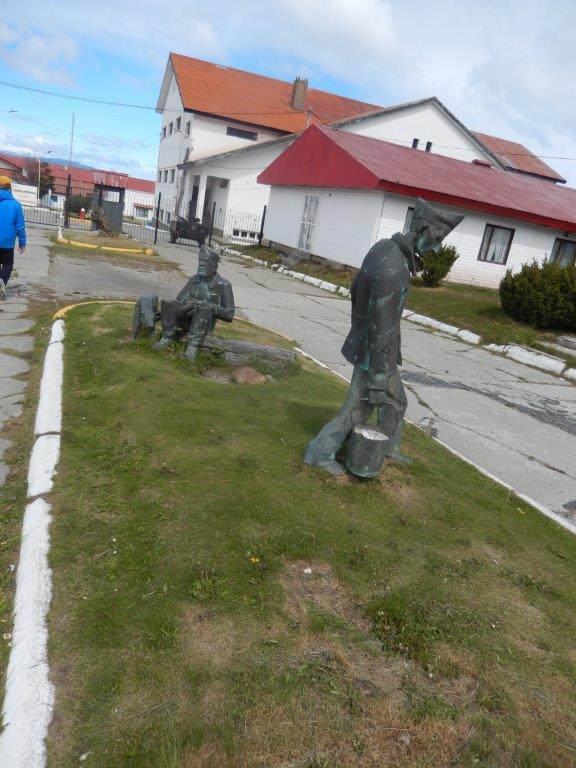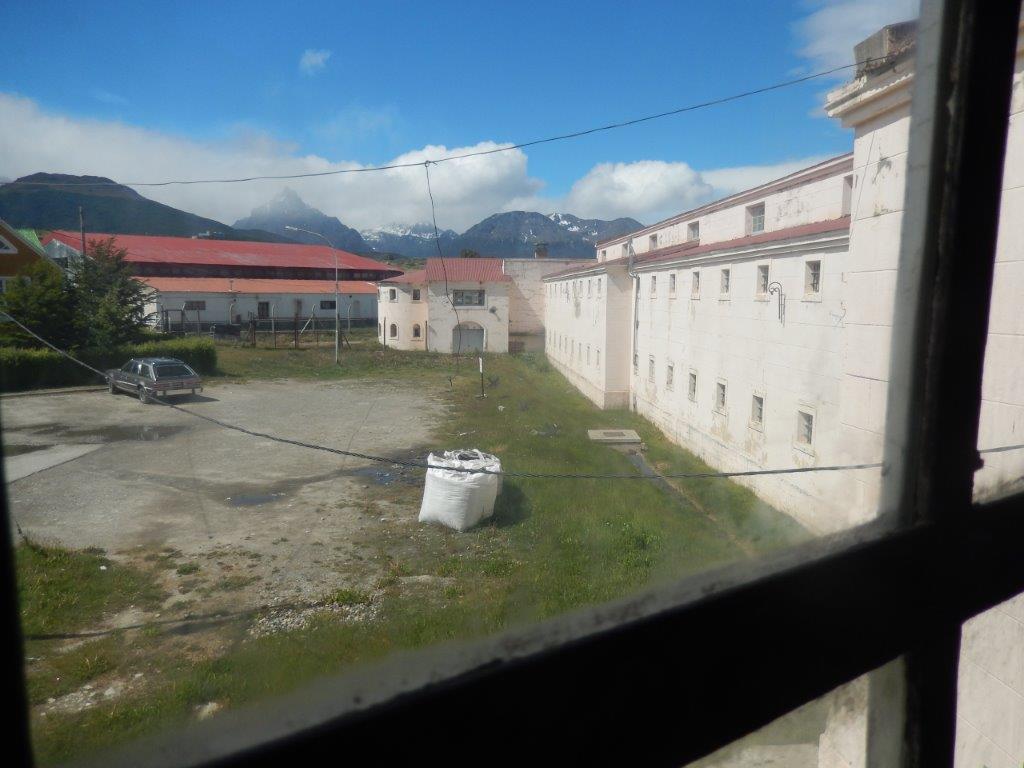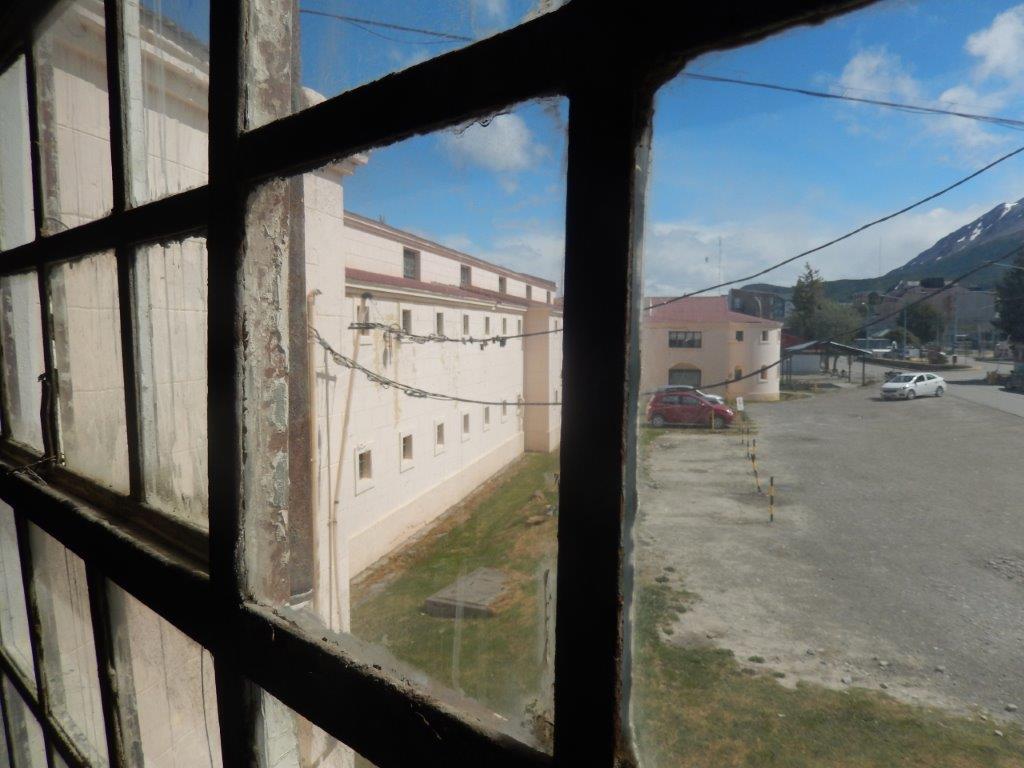42. Argentina: Museo Maritimo y del Presidio de Ushuaia
Before leaving Ushuaia, Tierra del Fuego and Patagonia, The Wandelgek wanted to learn a lot more about the area and he decided to bring a visit to the Museo Marítimo y del Presidio de Ushuaia.
 The Ushuaia Maritime and Prison Museum (Ushuaia, Tierra del Fuego) is located in the building of the Former Ushuaia Prison (or Prison of Repeat Offenders of Tierra del Fuego), where the most dangerous criminals were held for their recidivism, charging a sad fame Today, the building houses four museums (each museum name links to a blogpost dealing with that specific museum):
The Ushuaia Maritime and Prison Museum (Ushuaia, Tierra del Fuego) is located in the building of the Former Ushuaia Prison (or Prison of Repeat Offenders of Tierra del Fuego), where the most dangerous criminals were held for their recidivism, charging a sad fame Today, the building houses four museums (each museum name links to a blogpost dealing with that specific museum):
- The Maritime Museum recreates with a maritime theme through a collection of naval models and models, everything related to the history of Tierra del Fuego from the special point of view of the man of the sea, given that the island of Tierra del Fuego and the archipelago that surrounds it, in addition to the Malvinas Islands, the South Georgia Islands and Antarctica are linked to the sea in all concepts.
- The Prison Museum in Pavilion IV, where you learn about the first Prison in Tierra del Fuego (1896), the intention of a penal colonization and the construction of the current building, the life of the inmates, jobs, punishments, closure and the sad story of some of its main occupants.
- The José María Sobral Antarctic Museum on the upper floor of Pavilion IV, has 19 rooms with the richest collection of preserved Antarctic historical and biological materials.
- the Museum of Marine art , with a selection of works of art by marine and port artists, through which an attempt is made to give a general and balanced vision of the development of marine art in Argentina, from 1889 to the present.
All of these will be dealt with in the upcoming blogseries, because this is quite a good museum. It is large in size, has a large collection and has a lot of english language explanation of the exibited artefacts and materials and.. some of those artefacts are really, really cool !!!
History
The former prison of Ushuaia, within the Ushuaia Naval Base , closed its doors in 1947. The old abandoned construction was converted into a museum and was recovered for visits through an agreement between the Argentine Navy and the Maritime Museum Civil Association of Ushuaia, in 1994 and was inaugurated on March 3, 1995. The building was declared a National Historic Monument by law of the National Congress in April 1997.
Museologist Carlos Vairo has been the director of the Ushuaia Maritime Museum since its inception. Given the poor conditions of the building, together with the Museum’s Civil Association, it solved numerous basic problems, such as collapsed ceilings, drains in poor condition, lack of electricity and gas.
The museum began operating with a private collection of ship models, engravings and old maps that make up regional history. Today, collections are exhibited that illustrate the maritime history of the region, from the discovery of Magellan, the life and customs of the Yámana people, to the legends of the gold seekers, the sealers and life on the Patagonian ranches.
Some time later, the Prison Museum was built, where the history of the prison is told, from its creation as the first prison in Tierra del Fuego in 1896, until its definitive closure, in 1947. Criminals considered dangerous for their recidivism, some of mythical fame, such as Cayetano Santos Godino alias the Petiso Orejudo , or Mateo Banks , the Mystic. Also political prisoners, particularly in the 1930s, after the military coup .
Walking through the pavilions and cells you get a very vivid idea of how the days of the inmates, punishments or forced labor passed in that distant corner of the Earth , in a prison that was reached and from which one escaped, according to It is said, only by sea. At the same time, the Antarctic Museum was developed with the Antarctic expeditions and the Ushuaia Museum of Marine Art.
The residents of Ushuaia contributed important material on the history of the city, its ancient inhabitants, the canoeing Indians and Fuegian architecture. Together with a group of prominent local artists, the Museum’s Art Gallery was born and with it the drawing, painting, sculpture, theater and photography workshops. A library specialized in maritime and regional history was organized with the support of the local Legislature and the Naval Base.
Research is another of the museum’s keys and its results feed both permanent and temporary exhibitions. Through them, numerous surveys of historical human settlements in the region have been carried out, with the support of the Argentine Navy, on private sailboats and with the Ice Lady Patagonia icebreaker.
More about the separate museum parts including the history of Ushuaia as a colony for prisoners and its further development into the current town, will be told in the subsequent blogposts.


